
by bsquared5@aol.com | Sep 28, 2016 | Thoughts
I have a relic in the corner of my dining room, a dinosaur that I often have to explain to younger visitors. They mistake it for a toolbox or curious storage cabinet. “This,” I say, running my hand across the rectangular drawers, “is a card catalog. It’s how we used to keep track  of books in the library. Kind of a prehistoric internet.”
of books in the library. Kind of a prehistoric internet.”
I get it, when the young ones digest this information with puzzled expressions. Now that information is a click away on a glowing screen, when Wikipedia does all the heavy lifting, a bank of file drawers with titles, authors, and subjects typed by hand on index cards seems archaic, like an abacus, or 8-track, or jello mold.
As soon as I was old enough to pedal my bike without training wheels, I headed for our local public library. My mother helped me get a library card, an official laminated square with my very own name on it that magically gave me free access to shelf upon shelf of books. When the librarian asked to see my card at the check-out counter, I slid it across to her like it was an American Express on Rodeo Drive. That card was my sole reason for owning a wallet.
It was my impossible goal one summer to read every book in the children’s section. I got mostly through the A’s before realizing there was juicier fodder in the card catalog. I loved the crinkly plastic jacket covers. I loved the pocket stuck to the back cover that held a card stamped with dates tracing the number of times this book or that one had been selected, borrowed, and returned again.
Then, privacy wasn’t such an issue, and the card bore the names of past readers, their signatures a witness to their interest in a given topic on a given day. The names on those cards used to fill me with stories of the imagined lives of the borr owers. Why did Alice Dodd renew Sounder three times? Was her life so hectic she couldn’t finish it or did she just like a good cry? What kind of a person was Mark Amos that drew him to read Sylvia Plath? I always felt sorry for the books with blank or sparse check-out histories. If I found one, I’d renew it just to give it an extra stamp.
owers. Why did Alice Dodd renew Sounder three times? Was her life so hectic she couldn’t finish it or did she just like a good cry? What kind of a person was Mark Amos that drew him to read Sylvia Plath? I always felt sorry for the books with blank or sparse check-out histories. If I found one, I’d renew it just to give it an extra stamp.
High school research papers forced me to the library for business, not pleasure. I gained 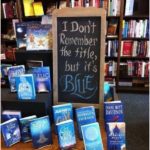 new respect for librarians: the Fairy Godmothers of Knowledge. No topic was too vague or obscure for them. A few flips through the card catalog and they could unearth the holy grail itself. I honed my hand-eye coordination by operating the microfiche machine in a dim-lit room, scrolling through old newspapers to find material. Librarians will run heaven’s registrar office. You will be able to cross the pearly gates after a nasty bump on the head with no idea who you are. They will peer down at you, size up that scar on your left knee and the slightly upturned nose, flip through a dusty tome or two and recite your ancestry, character flaws and deeds of note leaving plenty of time for lunch.
new respect for librarians: the Fairy Godmothers of Knowledge. No topic was too vague or obscure for them. A few flips through the card catalog and they could unearth the holy grail itself. I honed my hand-eye coordination by operating the microfiche machine in a dim-lit room, scrolling through old newspapers to find material. Librarians will run heaven’s registrar office. You will be able to cross the pearly gates after a nasty bump on the head with no idea who you are. They will peer down at you, size up that scar on your left knee and the slightly upturned nose, flip through a dusty tome or two and recite your ancestry, character flaws and deeds of note leaving plenty of time for lunch.
Libraries exert no pressure. Unlike bookstores, where I feel as if I must carry around a book or two to give the appearance of being a potential purchaser, libraries are for loafing. Borrow it, or don’t. Read the whole thing in the chair by the window and they won’t cast disapproving looks at you because they’ve lost a sale. If they don’t have it, someone else in the world wide library family probably does, and they’ll send it over! Even their overdue fees are ridiculous! Ten cents a day? No other civic institution operates on these sort of fumes. Libraries are the best game in town. They don’t play favorites. Anyone can come to story time, have access to reading, and take home a stack of books to explore. They give out library cards like Halloween candy.
Some of the most beautiful places in the world are libraries. We stopped in Dublin’s Trinity College Library this past summer for a glimpse at the famous Book of Kells. This was one of the most beautiful books in the world housed in one of the most beautiful libraries in the world. When we left after our tour, my husband and I were both pretty much like this:

Seriously, floor to ceiling leather-bound volumes with gilt edges. An arched wooden ceiling with a spiral iron staircase leading to the topmost stacks.  Golden letters on the shelves to alphabetize by author. Unfortunately, they weren’t keen on a couple of American tourists becoming “Readers in Residence,” despite our offer.
Golden letters on the shelves to alphabetize by author. Unfortunately, they weren’t keen on a couple of American tourists becoming “Readers in Residence,” despite our offer.
Because libraries often rely on donations and limited acquisition budgets, they tend to keep books around a long time. The more ancient and historical libraries are literal repositories for the history of the world. As Virginia Woolf said, “I ransack public libraries, and find them full of sunk treasure.” Indeed.
Plus, when you reach a “certain age,” they’re one of the only places where you’re still going to get carded. Free books and an ego-boost: who can’t use more of those?
Thanks for reading! To return to the FICTION WRITERS BLOG HOP on Julie Valerie’s website, click here: http://www.julievalerie.com/fiction-writers-blog-hop-sept-2016
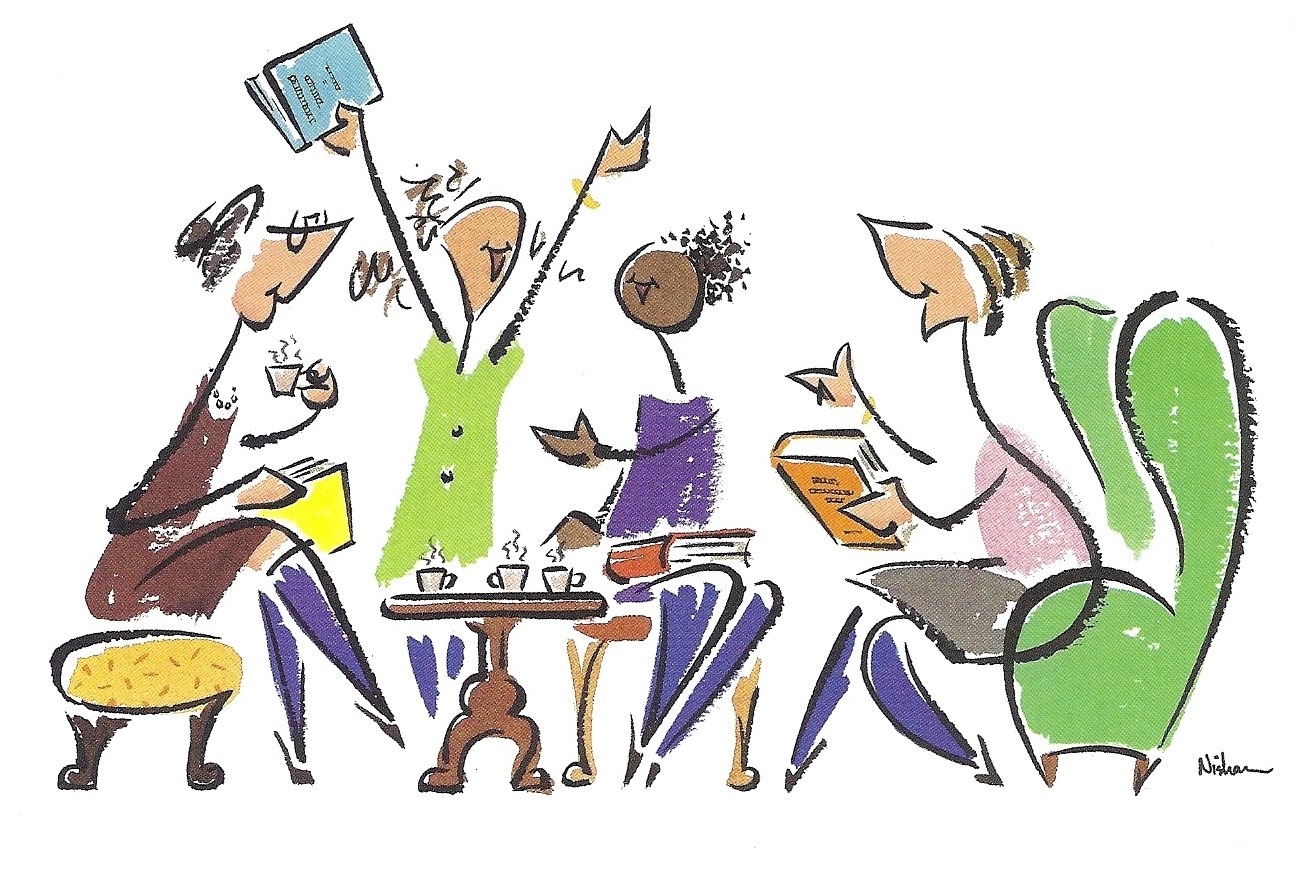
by bsquared5@aol.com | Aug 30, 2016 | Thoughts
A staggering statistic has been battered about lately. Something like 28% of American adults did not read a single book last year. Not in print, not on Kindle, not even plugged into an audio book on a long commute.
Who are these people? I do not know them. Books accompany me at all times, just in case I have extra minutes in the pick up line at school, in a doctor’s office, or at a kid’s sports practice. Whispered confession: occasionally, if it’s a real page turner, even at long red lights. They tuck me in at night and share my breakfast when I wake up. Going a whole year without turning a page would be like giving up chocolate: no bueno.
My bookshelf houses mostly fiction. Turns out, that’s mostly what women read, while most men who read (a much rarer species) head for the non-fiction. Supposedly this is because fiction has characters, and women specialize in empathy, making it easier for us to get caught up in the story. Also, we are (again a generalization) a more patient gender, and from an earlier age have learned to sit still to actually make it to the end of a novel.
Women congregate. We huddle up. We have play dates, lunch dates, ladies’ night out, and entire girls’ weekends. Women who read, it stands to reason, gather over books. Book clubs are a lot like friendships. Some weather all phases of life and meet steady as clockwork for decades. Some wax and wane with the members’ seasons of life, knitting new ties and loosening old ones.
I’ve been in several book clubs since my 20’s, each with its own flavor. With book clubs, as in life, diversity of membership is best for interesting discussion. Over the years, members have included different nationalities, races, ages, religions, and marital status. Best book we discussed: Gone to Soldiers by Marge Piercy.
Book clubs are dynamic entities that require care and feeding to survive. While book clubs are as varied as the books they celebrate, some basic principles apply to each.
First, (duh) book clubs work best if the members read the book. If you hate it, choke it down so at least you can say why you hated it. If you read it weeks ago and can’t remember any of it, jot down some notes or highlight your copy so you can point out thought-provoking or well-written passages. Reading books does take time and some self-discipline. Knowing I have to share some halfway intelligent opinions by a certain date spurs me to turn off the TV and quit scrolling through Twitter so I can finish and contribute.
Whether you rotate who chooses the book or your group is led by a scepter-wielding dictator, people’s preferences differ so don’t shoot the messenger. The person who picked the book probably didn’t write it, so if it was the worst drivel you’ve ever slogged through, blame the author, not the chooser. Intimidation and insults don’t stimulate meaningful conversation, generally. If this happens a lot for you, maybe you’re in the wrong group.
Also, kind of the whole reason book clubs exist is so you can branch out, grow, learn from others’ experiences and perspectives, yadda yadda yadda. So probably you shouldn’t dig in your heels and refuse to be flexible. Unless it’s one of the group’s stated tenants that it “doesn’t read horror,” for example, it’s kind of like eating at someone else’s house. You don’t make faces, declare it “Yucky!” and refuse to try a bite. Surely something in the book will interest you. Come on, just try it! You can read your personal preference outside the group.
Some book groups are highly disciplined, following the reader’s guides in the back of the book and staying on task. Some have good intentions but manage to keep falling down tangential rabbit holes. If your goal is actually to discuss the book and not just to finish the bottle of wine, it helps for the person who chose the book to have some questions to rein in the gossip and chatter. Depending on the personalities in the group, this can be a herculean task and frustrating for those who came for a book club. This is when Dory’s voice plays in my head: “Just keep swimming, just keep swimming, that’s what we do, we swim….”
Mix it up. Many popular titles are released as movies or TV series. (Think Outlander or Girl on a Train.) Double dip and have a girls’ night out field trip to compare the book with the movie. (Spoiler alert: the book is always better.)
Thanks for reading! To return to the FICTION WRITERS BLOG HOP on Julie Valerie’s website, click here: http://www.julievalerie.com/fiction-writers-blog-hop-aug-2016
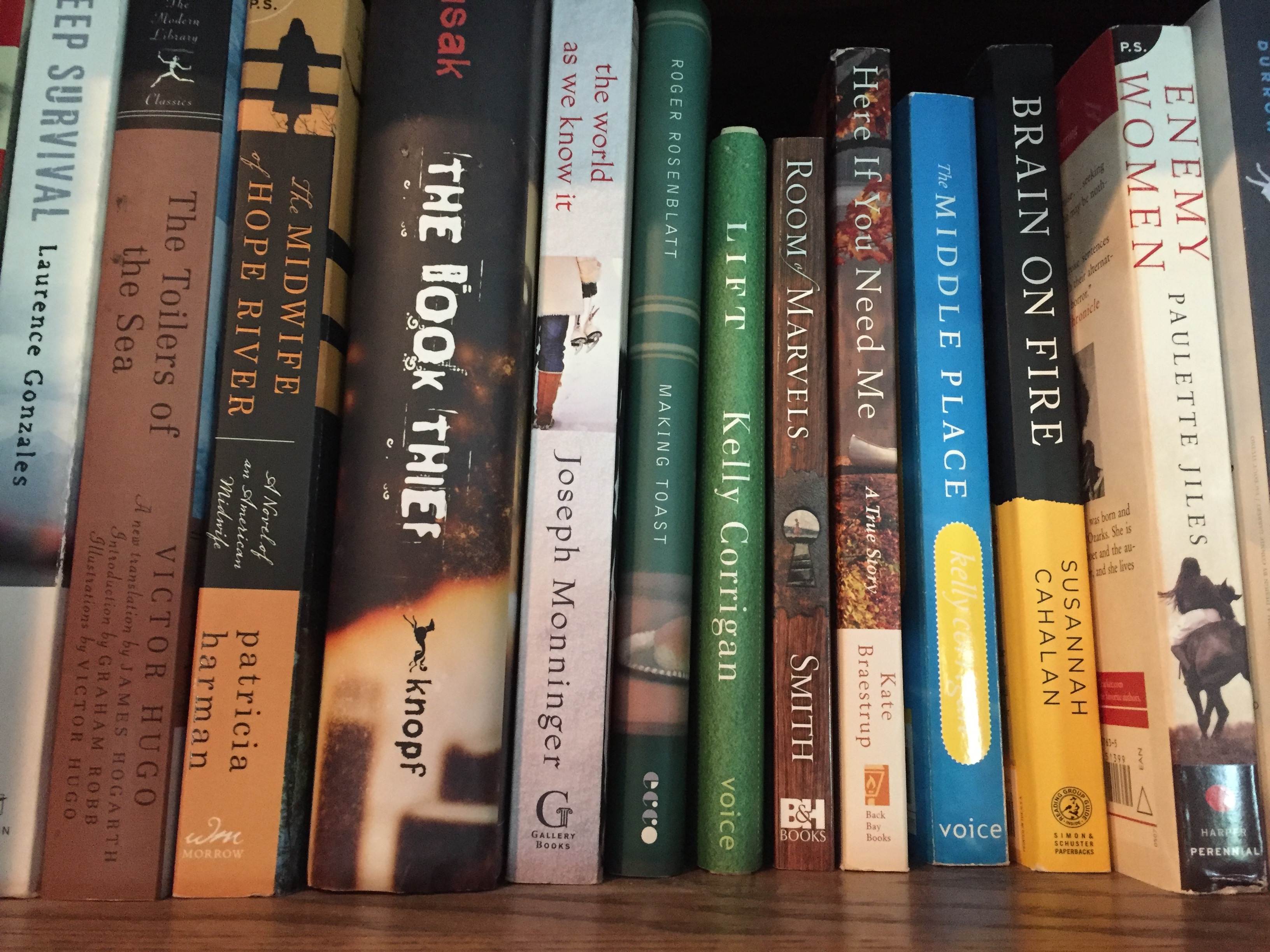
by bsquared5@aol.com | Jul 26, 2016 | Thoughts
As the fourth of five siblings, most of my childhood books had already been well-loved by the time they came to me. Covers, if they remained at all, were worn and tattered, often with some words rubbed off altogether. My parents’ shelves were lined with classics, all with identical green and gold covers, designed to look swell on display.
In middle school, we were instructed to cover our textbooks with folded paper bags from the grocery store, which provided blank canvases for doodling in class. Later, we learned to camouflage Flowers in the Attic or Wifey so we could read such contraband without parental interference. My formative reading experience was with books from the local library, their jackets wrapped in annoying crinkly cellophane secured to the book with yellowing tape.
Book jackets were either absent or needed to be engineered or endured. I learned not to pay attention to them. Cover art only spoiled the images of characters or places my imagination would create, and reading the pert summaries might reveal too much of the plot.
Titles held the allure for me. They were the beckoning finger, the enticing come hither. Once the title had my attention, if I could make it through the first paragraph with my interest piqued, then I’d give it a go. Happy, sad, horror, mystery, romance–it didn’t much matter so long as the story had a decent pace and the plot wasn’t too predictable. A book’s jacket, if it had one, was useful as an impromptu page marker at best.
Turns out, I may be an anomaly. Apparently, second only to favorite author, jacket copy is the next most important factor in the average person’s book purchase. Plus, most people don’t want to work that hard to figure out what a book is about. Who has time to read an opening paragraph or even a whole chapter to sample an author’s voice and style when you can make a quick judgment based on crafted adjectives and celebrity reviews?
Of course there’s a wealth of talent and creativity in those who design cover art and word jacket summaries! Clever design and painstaking art are beautiful in their own right. Many covers can stand alone as frame-able. Distilling a novel to its essence in just a few enticing sentences can be insanely difficult. And woe to you if you mislead the reader, billing a plot as horror when it’s more suspense or thriller. Forgiveness comes slowly. Despite an entire industry devoted to them, jackets are advertising: show and spin, designed to turn heads. The meat lies within.
We are a fickle species, our attention diverted by sparkle, shine, the new, and the next. Witness the trend of movie tie-in covers, which may generate additional buzz, but for purists who know the movie is rarely (never?) as good as the book, are insulting. Plus, I don’t need Daniel Radcliffe’s face staring at me from my nightstand, thank you. That’s what Google’s for.
An accidental experiment: While writing this post, the book I’m currently reading (The Secret Chord by Geraldine Brooks) sat on the counter, sans jacket, just a plain dark brown cover. My teenage son, who despite my best efforts would rather eat an entire can of beets than read (et tu, Brute?), repeatedly picked it up and thumbed through it, almost without realizing it. When I asked why he kept being drawn to my book, he said it was because it had no cover and he wanted to see what it was about!
It was a mystery, an invitation to explore, which is what books are all about in the first place. When it’s all done for you, laid out in bold type on the cover, maybe it steals some of the discovery. When we were young, my mother would occasionally bring home a case of discount canned goods with no labels. Sometimes you’d get pickled asparagus, but sometimes you’d get your favorite. I guarantee it made dinner that week an adventure!
Am I a book jacket curmudgeon, shaking my cane at the bright and shiny displays lining the entryways of bookstores? Perhaps. But maybe jackets shouldn’t be abandoned totally. Juniper Books, based in Boulder, manufactures custom jackets on a large-format printer to create unique and artistic book displays. What if bookstores displayed Jack London’s works like this, using murals based on some of the themes in his novels.

source: http://www.wired.com/2012/06/book-design/
Maybe it wouldn’t be 100% practical, but wouldn’t it be interesting to look for books on politics in a section shelved like this?

source: http://www.wired.com/2012/06/book-design/
There’s no denying the whimsy and visual effect!
Maybe book jackets are essentially costumes. We have been conditioned to pay no attention to the guy with the crooked necktie and thick-rimmed glasses. He may be Mr. Right, strong, faithful and affectionate, but he looks like everyone else. When he steps into that phone booth and dons a pair of tights and a bodysuit emblazoned with a giant “S,” we sit up and take notice. Same guy–he was there all along–but it took some primary colors and bold type to show us Superman was in our midst. From now on, they’re not book jackets. I’m calling them Book Capes.
Thanks for reading! To return to the FICTION WRITERS BLOG HOP on Julie Valerie’s website, click here: http://www.julievalerie.com/fiction-writers-blog-hop-july-2016

by bsquared5@aol.com | Jun 28, 2016 | Thoughts
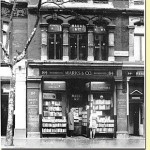
Marks & Co., London
Years ago, I stumbled across Helene Hanff’s 84, Charing Cross Road, a record of the correspondence between Helene, a snarky Manhattan writer, and Frank Doel, acquirer of rare editions at an antiquarian bookstore named Marks & Co., in England. I fell instantly in love: with Frank, Helene, and the dusty, jumbled bookstore, itself a tangible character in the story. The tale was later turned into a play and then a movie, starring Anne Bancroft and Anthony Hopkins, which is perfect to watch on a gray winter afternoon, under a cozy blanket with chocolate and coffee–and a cat or two.
Bookstores like that one, or the fictional Flourish and Blotts shop in the Harry Potter series, are now too often the settings in novels rather than addresses on a real map. I prefer old-school books with creaky spines and pages marked with notes in the margins over the shiny, precise Kindles and Nooks with pages that turn with an elegant swipe rather than a lick of the finger and a leftward toss. New is popular. Bookstores now have less tolerance for lingering over leathery used volumes. Covers must be eye-catching and colorful, the newest and freshest within a few steps of the entrance. After a few short weeks, the shelves are swept clean and their contents tossed onto the “clearance” pile, to make way for the even-newer to serve the waning attention span of the modern American.
The lure of the corner book store is irresistible. Whether it’s a cookie cutter chain store or a mysteries-only shop with a resident cat languidly posed across the Dick Francis shelf, the smell of print-on-page and the potential of all those uncracked spines is a siren’s call of temptation for people like me. The best bookstores have managed to maintain an atmosphere that caters to lovers of books, without too much peripheral merchandising. I’ve been in a few that I’d consider national treasures.
There’s the Tattered Cover in Denver, an enormous indie bookstore open for over 40 years. It has overstuffed chairs that beckon you to stay and read a chapter or two of a new or used volume. I discovered this piece of heaven in college. Sadly, they refused to let me use it as my dorm room.
I wandered for hours through Powell’s in Portland, Oregon, which takes up a city block and has a charming children’s section.
In my neck of the woods, co-owned by bestselling author Ann Patchett and publishing veteran Karen Hayes, Parnassus is nestled in a small corner in a bustling area of Nashville. It’s an independent jewel of a bookstore that hosts a steady stream of author events for its community of book lovers. Adding to its charm and personality, you likely will be greeted by one of many of the store’s shop dogs.
A friend recommended The Strand Bookstore on the corner of 12th and Broad in Manhattan. On a rainy day visit, I dashed inside and browsed 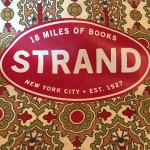 clear through lunch, marveling at the rare titles and unique categories in the eclectic atmosphere. Good thing I had a subway ride back to the hotel, which limited the number of bags I could reasonably carry with me.
clear through lunch, marveling at the rare titles and unique categories in the eclectic atmosphere. Good thing I had a subway ride back to the hotel, which limited the number of bags I could reasonably carry with me.
When we were first married, my husband and I haunted the famous Davis-Kidd Booksellers every weekend in Knoxville until it closed. It became our favorite date night. It was dangerously just down the street from our first apartment and it threatened to ruin us financially. Rent or books? Groceries or books? It’s not always as clear-cut as you might imagine!
The common denominator of these bookstore royalty is the personal connection they all strive for, whether they take up several stories on a city block, or they’re in a tight corner in an overlooked alleyway. It is so easy today to remain isolated, with books arriving at your doorstep via a credit card and mouse click. At bookstores like these, if you’re a regular, the staff knows your tastes and can recommend reads they know you’ll love. You can chat with other bibliophiles who rave about something they’ve just read because it’s just that good, not necessarily because it has the right ranking or the right reviewers. You can meet authors and tell them how their words changed you.
The antique booksellers at 84, Charing Cross Road have long gone, and the location has housed many things since; a wine shop, a restaurant, and currently a McDonald’s (blasphemy)! Fortunately, the truth of the story remains. The impact a simple bookstore and its gentle owners can have on a person runs deep, spanning decades and continents. In a letter to her friend in 1969, Helene wrote: “If you happen to pass by 84, Charing Cross Road, kiss it for me! I owe it that much.” I know the feeling.
Thanks for reading! To return to the FICTION WRITERS BLOG HOP on Julie Valerie’s website, click here: http://www.julievalerie.com/fiction-writers-blog-hop-june-2016

 of books in the library. Kind of a prehistoric internet.”
of books in the library. Kind of a prehistoric internet.” owers. Why did Alice Dodd renew Sounder three times? Was her life so hectic she couldn’t finish it or did she just like a good cry? What kind of a person was Mark Amos that drew him to read Sylvia Plath? I always felt sorry for the books with blank or sparse check-out histories. If I found one, I’d renew it just to give it an extra stamp.
owers. Why did Alice Dodd renew Sounder three times? Was her life so hectic she couldn’t finish it or did she just like a good cry? What kind of a person was Mark Amos that drew him to read Sylvia Plath? I always felt sorry for the books with blank or sparse check-out histories. If I found one, I’d renew it just to give it an extra stamp. new respect for librarians: the Fairy Godmothers of Knowledge. No topic was too vague or obscure for them. A few flips through the card catalog and they could unearth the holy grail itself. I honed my hand-eye coordination by operating the microfiche machine in a dim-lit room, scrolling through old newspapers to find material. Librarians will run heaven’s registrar office. You will be able to cross the pearly gates after a nasty bump on the head with no idea who you are. They will peer down at you, size up that scar on your left knee and the slightly upturned nose, flip through a dusty tome or two and recite your ancestry, character flaws and deeds of note leaving plenty of time for lunch.
new respect for librarians: the Fairy Godmothers of Knowledge. No topic was too vague or obscure for them. A few flips through the card catalog and they could unearth the holy grail itself. I honed my hand-eye coordination by operating the microfiche machine in a dim-lit room, scrolling through old newspapers to find material. Librarians will run heaven’s registrar office. You will be able to cross the pearly gates after a nasty bump on the head with no idea who you are. They will peer down at you, size up that scar on your left knee and the slightly upturned nose, flip through a dusty tome or two and recite your ancestry, character flaws and deeds of note leaving plenty of time for lunch.![]()
 Golden letters on the shelves to alphabetize by author. Unfortunately, they weren’t keen on a couple of American tourists becoming “Readers in Residence,” despite our offer.
Golden letters on the shelves to alphabetize by author. Unfortunately, they weren’t keen on a couple of American tourists becoming “Readers in Residence,” despite our offer.






